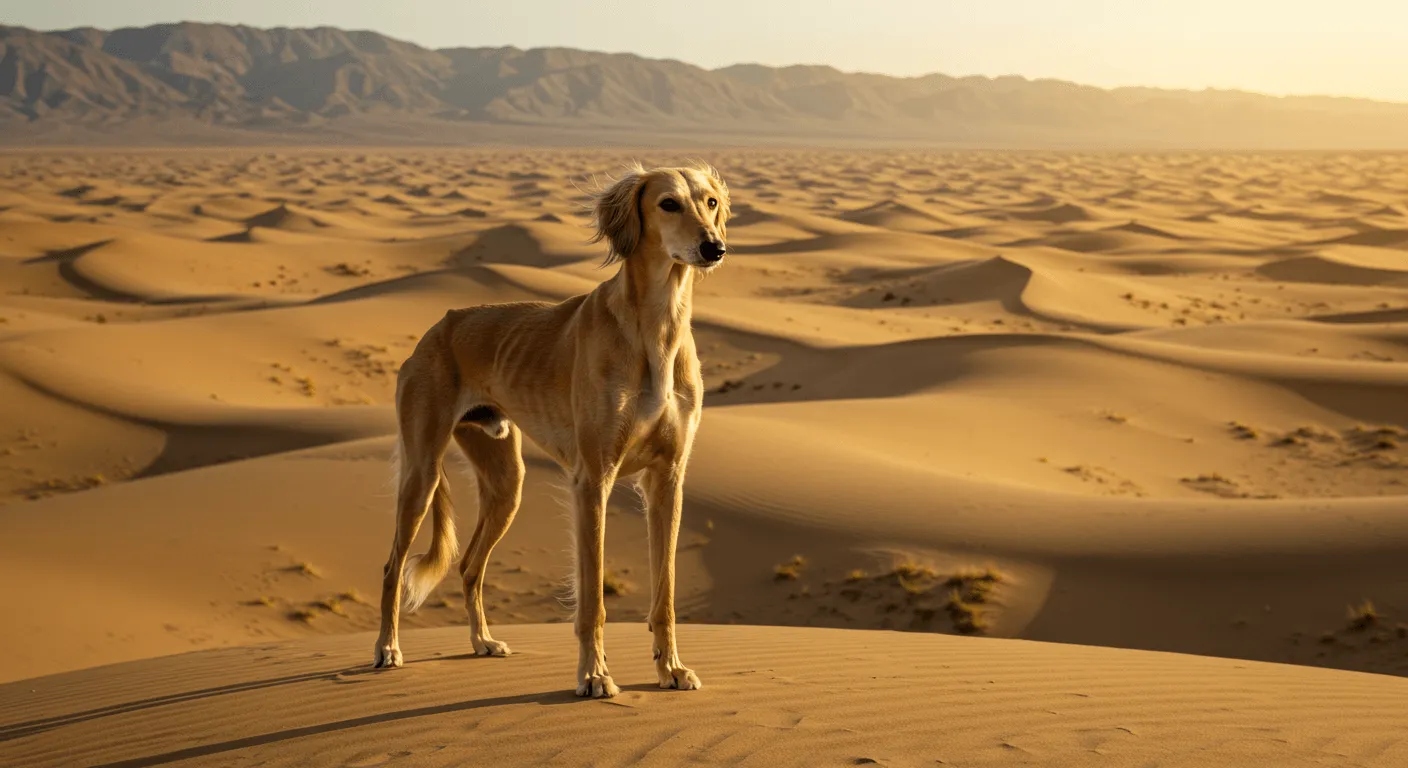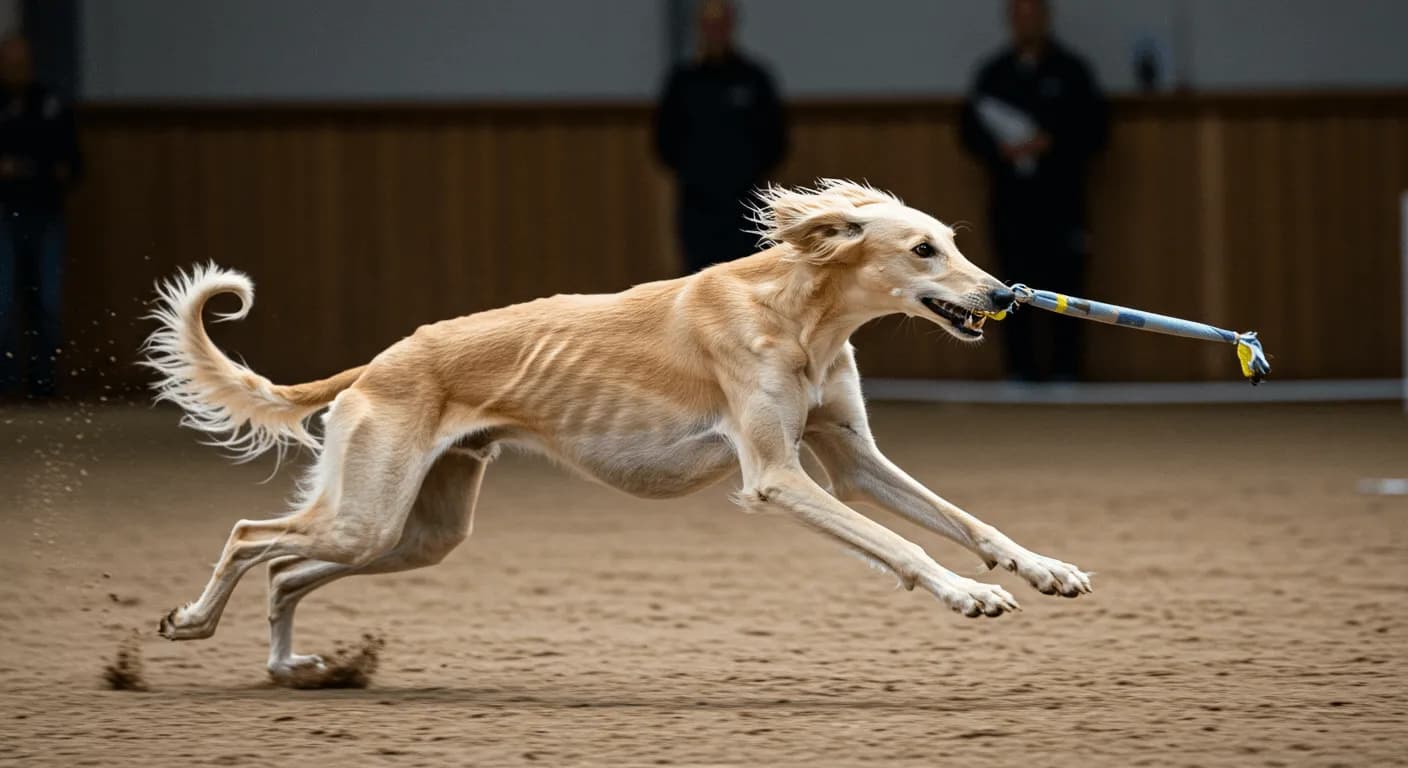The Saluki is one of the oldest and most revered dog breeds in the world. Known for their extraordinary speed, endurance, and distinct elegance, Salukis have a rich heritage that spans thousands of years. In this article, you will learn everything about Saluki history and origin, including where the Saluki came from, how the Saluki was developed, the original purposes they served, and how they got their distinctive name. Dive into the fascinating legacy of this ancient sighthound, and see how they have maintained their significance up to the modern day.
Early History and Origin of the Saluki
The Saluki history and origin can be traced back almost 5,000 years. Archaeological evidence, such as wall paintings and artifacts discovered in ancient Egyptian tombs, depicts dogs that look remarkably similar to the modern Saluki. Revered by pharaohs and often mummified like royalty, Salukis were not merely pets but treasured companions and working dogs.
Earliest known ancestors of the Saluki are believed to have been domesticated in the Fertile Crescent, a region that included parts of modern-day Iraq, Syria, Lebanon, and Israel. These early dogs likely evolved from the wild canines of the region, adapted to traverse vast desert landscapes in search of prey.
Genetic studies suggest that the Saluki is a basal breed, meaning it predates most modern dog breeds and has an ancient genetic lineage. This places them closer to the early domestic dogs, making their bloodline particularly pure and historically significant.

The Environment That Shaped the Saluki
When exploring where the Saluki came from, it's essential to consider the original native landscape and how it influenced the breed’s characteristics. The harsh deserts and arid plains of the Middle East required a dog breed that could run with both speed and endurance. The Saluki's lightweight yet strong frame, long legs, and deep chest are evolutionary adaptations to these conditions.
Moreover, the cultural significance of the Saluki was profound. In Islamic tradition, dogs are generally viewed with suspicion; however, the Saluki was considered an exception due to its noble purpose and association with hunting. It was often referred to as "the noble one" or "gift of Allah," solidifying its revered status.
Development of the Saluki Breed
Understanding how the Saluki was developed offers insight into the dog’s characteristics and esteemed reputation. Bedouin tribes selectively bred Salukis for their hunting ability, intelligence, and loyalty—traits that remain evident even today. Dogs not meeting the rigorous standards either were not bred or were not kept, ensuring only the finest qualities proliferated.
The main objectives behind breeding were:
- Exceptional speed to chase and catch animals like gazelles and hares.
- High endurance to run long distances under scorching desert sun.
- Acute eyesight necessary for spotting prey from great distances.
Historical Purpose and Function
So, what was the Saluki bred for? Originally, Salukis were used primarily for hunting fast desert game. Their exceptional agility and sight-hunting (sighthound) abilities made them indispensable assets for nomadic tribes.
Some of their specific tasks included:
- Hunting gazelle, one of the fastest antelopes, requiring incredible speed and maneuverability.
- Herding small livestock over difficult terrains.
- Acting as loyal companions and status symbols within noble households.
The economic and social importance of the Saluki was immense. Successful hunting expeditions meant food for families and communities. Furthermore, owning a Saluki often indicated wealth and status.
Over time, as hunting practices evolved and modern tools became prevalent, the Saluki’s role shifted more toward companionship and show exhibition, particularly as the breed spread to Europe and America.
Naming and Nomenclature of the Saluki
Delving into how the Saluki got its name uncovers yet another layer of its storied history. The term "Saluki" is believed to derive from the ancient city of Saluq, located either in Yemen or Syria, depending on varying historical interpretations. Some scholars argue that the name might come from the Arabic word 'Saluqi,' referencing something from Saluq.
The "Saluki" name, thus, carries cultural and geographical weight, linking the breed unmistakably to the Middle Eastern region from which it hails. The historical naming conventions underscore the bond between the dog and the desert cultures that nurtured it.
Historical Impact and Legacy
The historical impact and legacy of the Saluki are vast. Throughout ancient times, Salukis impacted human activities by aiding in hunting, providing security, and even serving ceremonial roles. Their images appearing in ancient art and their mummified remains in tombs beside great rulers show the revered position they held.
The breed also enchanted European travelers and explorers:
- In the 1800s, travelers brought Salukis back to Europe, highlighting them as exotic treasures.
- The breed was formally recognized by the Kennel Club in England in 1923.
- In America, the Saluki started gaining popularity and recognition afterward.
When the Saluki came to America is most often pegged to the early 20th century. American soldiers and officials stationed in the Middle East after World War I introduced the breed to the United States, where it was soon appreciated for its beauty and athletic prowess.

Summary of Key Historical Dates
Here are some important timeline milestones in the Saluki bloodlines history:
- c. 2100 BCE — Saluki-like dogs depicted in ancient Sumerian artworks.
- c. 1800 BCE — Salukis featured in Egyptian tomb paintings and artifacts.
- Islamic Golden Age (8th - 13th centuries) — Salukis receive special cultural status among Arab tribes.
- 1800s — European travelers bring Salukis to Europe.
- 1923 — The Kennel Club (England) officially recognizes the Saluki breed.
- 1927 — American Kennel Club (AKC) recognizes the Saluki.
- Modern Day — Salukis thrive as companions, sporting dogs, and show champions globally.
Unique Characteristics and Enduring Qualities
The Saluki’s traits, shaped over millennia, continue to define this breed today:
- Physical Endurance: Built to run over massive desert expanses without tiring quickly.
- Emotional Intelligence: Bred to work closely with humans while maintaining a degree of independence.
- Aesthetic Elegance: Known for a royal, poised appearance prized in modern dog shows.
These unique attributes stem directly from the breed's historical development and original environmental needs.
Why the Saluki Remains Significant
The Saluki is not just a relic of ancient civilizations; it remains relevant and beloved. Its combination of beauty, brains, and athleticism ensures that it finds a place in various modern roles—from therapy dogs to competitors in lure coursing sports. The continuing respect for its ancient qualities and adaptability to contemporary lives keeps the Saluki's legend alive.

In Summary
In this deep dive into Saluki history and origin, you learned where the Saluki came from, how the Saluki was developed, and what the breed was originally bred for. With a storied lineage stretching from the ancient Middle East to palaces and homes across the modern world, the Saluki remains a living testament to enduring elegance, loyalty, and astonishing ability.
Stay tuned for a detailed conclusion that will explore how the Saluki continues to influence dog breeding practices and the field of canine athletic competitions today.## Salukis in Ancient Art

Saluki Myths and Legends
Bedouin folklore revered the Saluki as a sacred desert gift.
Evolution of Saluki Coat Types

Saluki's Role in Early Trade
Salukis were traded along Silk Road routes, spreading their fame.
Modern Saluki Sports

The Saluki’s story is one of endurance, elegance, and deep cultural significance. From the ancient deserts of Mesopotamia and Egypt to the lush fields of modern dog shows and athletic competitions, the Saluki has remained a symbol of grace, loyalty, and speed. Its early development, shaped by harsh environments and meticulous breeding practices, gave rise to a dog that was not only a skilled hunter but also a deeply respected companion.
Understanding the Saluki history and origin, from where the Saluki came from to what the Saluki was bred for, reveals just how integral this breed has been to human societies for thousands of years. Its appearance in ancient art, its esteemed status in noble courts, and its present-day versatility show a breed that has evolved yet stayed true to its essential nature.
As we continue to cherish the Saluki today, we honor a lineage that connects us to the dawn of civilization itself—a living testament to the bond between humans and their most loyal hunting companion. Whether in the desert sands, royal courts, or modern homes, the Saluki stands as an enduring icon of excellence and history.

